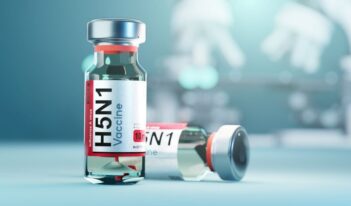
Better tools are needed to evaluate regulatory effectiveness.
A large gap in the regulatory system is the absence of data and analysis to determine whether agency rules accomplish their intended purposes. Specifically, far too little is known about whether the problem targeted by a particular rule is solved or reduced because of the rule.
Legislative bodies at all levels of government, local, state, and federal, constantly pass laws which authorize – and sometime require – agencies to promulgate new rules and regulations. The agencies respond and new regulations are adopted. As others have noted, however , these regulations are rarely subject to anything approximating rigorous post-adoption analysis to evaluate their actual effectiveness.
For example, two major pieces of federal legislation, which Congress recently enacted, increase the regulatory authority and jurisdiction of the Food and Drug Administration (FDA): the Family Smoking Prevention and Tobacco Control Act of 2009 and the Food Safety and Modernization Act of 2011. Both statutes direct FDA to adopt numerous regulations but they also illustrate the lack of attention to post-adoption review, notwithstanding ready sources of data that could be used in conducting such reviews.
The Food Safety Act requires that FDA promulgate regulations “to establish science-based minimum standards for conducting a hazard analysis [of a facility where food is manufactured, processed, packed, or held], documenting hazards, implementing preventive controls, and documenting the implementation of the preventive controls.” While Congress’ s judgment that hazard analysis and preventive controls should be required to increase food safety makes sense, it does not necessarily follow that the regulation ultimately adopted will operate as intended or actually improve food safety.
Yet the Food Safety Act does nothing to require FDA to evaluate the regulations it develops under the law. This despite the fact that improvement in food safety is a measurable phenomenon. The Centers for Disease Control (CDC) estimate that 3,037 people died in the United States in 2011 from foodborne illnesses. A measure of the effectiveness of FDA’s preventive controls regulation would be whether the number of deaths declines following the promulgation and implementation of the rule.
The same point applies to rules adopted under the Tobacco Control Act. The Act’s goal is to reduce the number of smoking related illnesses and deaths, and also decrease associated health care costs. The congressional findings adopted with the law state that approximately 8.6 million Americans suffer chronic illnesses related to smoking. The legislation also notes that smoking causes over 400,000 deaths in the United States each year. Obviously FDA’s Tobacco Act rules should be considered to be effective only if those numbers decline and that decline is fairly traceable to FDA’s regulatory actions. But the law provides no requirement for the FDA or anyone else to make such an evaluation.
Far too often regulators’ performance is assessed only on whether they have faithfully implemented legislation. Although such process measures are important, regulatory accountability should not be solely concerned with whether an agency does as it is required or expected to do in a timely manner. Rather, the core of regulatory accountability should be substantive: Does regulatory action accomplish its intended purpose? For example, does regulation make the food supply safer as evidenced by a demonstrable reduction in the number of illnesses and deaths attributable to the consumption of food? Does it reduce the number of tobacco smokers and thus the number of smoking-related illnesses and deaths? The goal of regulation is not to adopt new legally valid regulations; the goal of regulation is to make a tangible difference in solving the problem which created the need for regulation in the first place.
Agencies should adopt and transparently disclose the metrics by which they and the public will judge the effectiveness of regulatory actions. FDA-Track, FDA’s website-based system for tracking and disclosing the status of the agency’s progress on completing projects and matters, is a start in this direction. FDA-Track is only a start, however, because it focuses heavily on process (e.g., is a project completed on time?), and not sufficiently on measuring whether FDA is accomplishing its public health mission. FDA-Track does not measure, for example, whether particular regulatory actions have a positive, negative, or neutral impact on solving the targeted public health problem.
There are, of course, multiple complexities and variables associated with finding valid methods for measuring the effectiveness of regulatory actions. The complexity of the problem is not, however, a good reason for failing to measure whether particular regulatory actions are effective. Everyone involved – legislative bodies, agencies, and the public at large – should want to know whether regulations work as intended. The relevant inquiry is whether a regulation ameliorates the identified problem in some measurable way. After all, if the regulation does not work, it should be discontinued and an alternative regulatory approach should be tried. Presumably the problem which prompted the need for the regulation persists.
Not many agencies – local, state, or federal – are voluntarily going to put in place publicly disclosed metrics so that the effectiveness (or ineffectiveness) of their respective regulatory actions can be measured and known. The measurement of substantive regulatory effectiveness is far more likely to become standard practice if doing so is legislatively mandated. Legislatures should require agencies to develop and publish the methodology which the agency will use to measure the effectiveness of a particular regulation. As Professor Cary Coglianese has recommended for certain major rules, an agency’s chosen regulation evaluation metric should be promulgated simultaneously with the regulation.
The process of measuring regulatory effectiveness will inevitably reveal that some (perhaps many) regulatory actions are ineffective. That conclusion would provide the predicate for trying to improve those regulations, perhaps scrapping ineffective regulations altogether and replacing them with new alternatives. These new alternatives would face scrutiny as well.
Those who believe that regulation is an indispensable tool for maintaining or increasing the degree of consumer protection and economic and social fairness in this country should take the lead in insisting upon measurements of the effectiveness of regulatory actions. The argument that regulation is necessary and that it works – a subset of the larger argument that government is also necessary and that it works – should rest on data substantiating the truth of the proposition.




